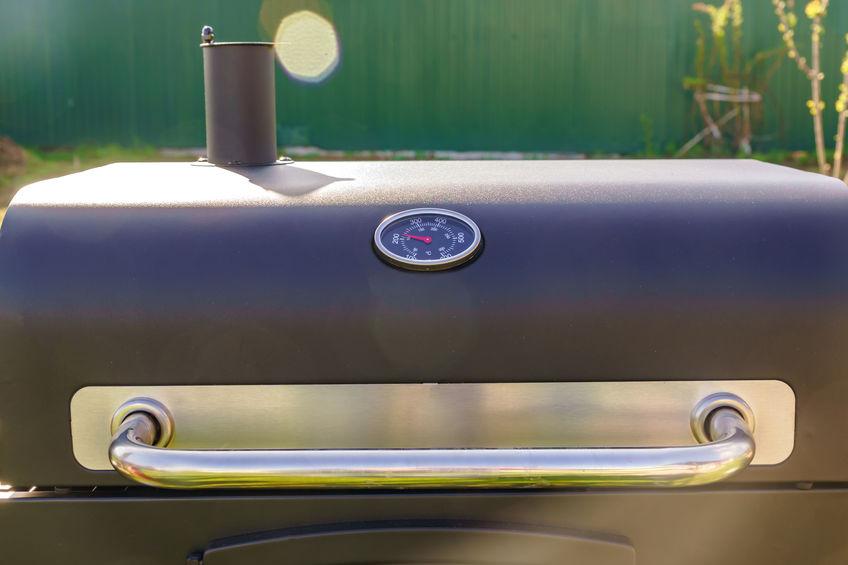
When it comes to grilling, understanding heat levels is crucial for achieving perfect results.
Many home cooks often find themselves asking, “What temperature is medium heat on a grill?” Medium heat typically ranges from 350°F to 400°F (175°C to 200°C), making it an ideal zone for cooking a variety of foods without burning them.
Grilling at medium heat allows for even cooking, which is essential when preparing delicate items like fish or vegetables, as well as thicker cuts of meat.
Mastering this temperature can elevate a grilling session from average to exceptional, ensuring that everything comes off the grill perfectly charred yet juicy.
With the right knowledge about grill temperatures, anyone can confidently approach the grill to impress family and friends.
By focusing on medium heat, it opens the door to a multitude of grilling possibilities that can enhance any outdoor gathering.
Understanding Grill Temperatures
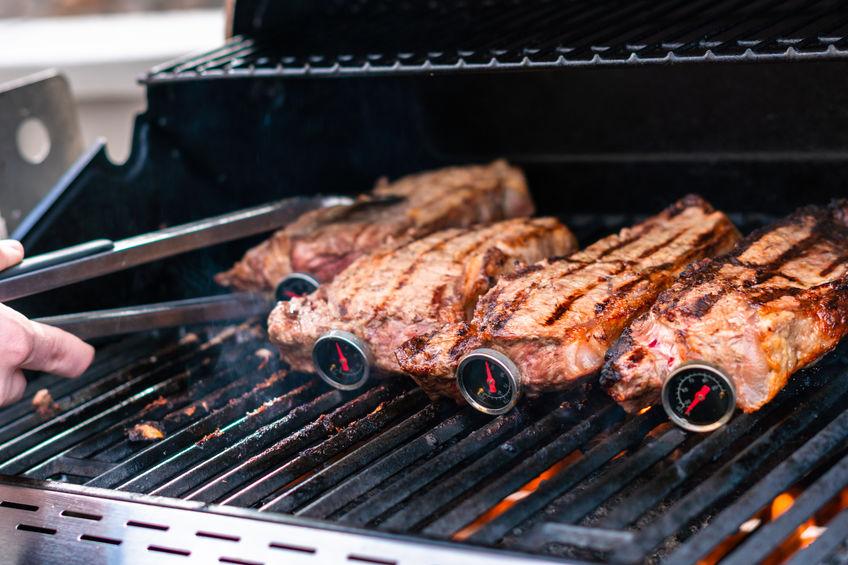
Grill temperatures play a critical role in achieving perfectly cooked food.
Comprehending the distinctions between different heat levels helps in mastering grilling techniques.
Defining Medium Heat on a Grill
Medium heat on a grill typically ranges from 300°F to 400°F (149°C to 204°C).
At this temperature, food cooks evenly without burning outside while remaining raw inside.
For gas grills, achieving medium heat is often as simple as adjusting the knobs to a medium setting.
Charcoal grills require more attention, using a combination of the amount of coals and their placement.
A reliable infrared thermometer or grill surface thermometer can provide accurate readings to confirm the right level of heat.
Temperature Ranges for Grilling
Understanding the complete spectrum of grill temperatures aids in selecting the proper heat for various foods.
- Low Heat: 200°F to 250°F (93°C to 121°C)
This is suitable for slow cooking and smoking meats. - Medium Heat: 300°F to 400°F (149°C to 204°C)
Ideal for cooking meats, vegetables, and fish. - High Heat: 400°F to 500°F (204°C to 260°C)
Best for searing steaks and grilling burgers.
Maintaining these temperatures consistently can enhance the flavor and texture of the food being grilled.
Types of Grills and Heat Distribution
Different types of grills offer various heat distribution characteristics.
- Gas Grills: Often provide even heat and are easy to control, allowing for precise temperature adjustments.
- Charcoal Grills: Heat distribution can be uneven, depending on the arrangement of coals. Direct heat can create hotspots, while indirect heat allows for more controlled cooking.
- Electric Grills: Typically maintain consistent temperatures but may not reach the high heat levels of gas or charcoal.
- Pellet Grills: Use wood pellets for fuel, providing a unique flavor. They can maintain specific temperatures well, making them suitable for various cooking methods.
Understanding how each type of grill interacts with heat can significantly influence grilling outcomes.
Meat Grilling Guide
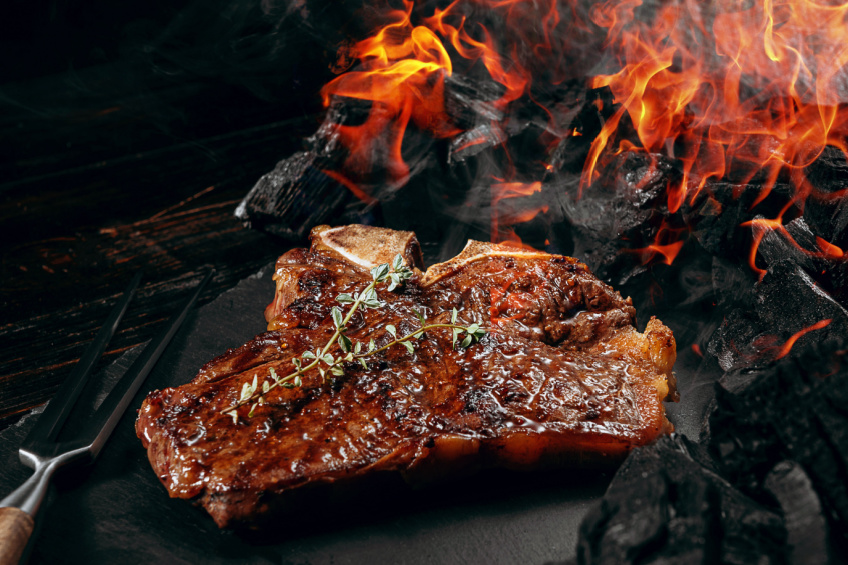
Knowing the right techniques and temperatures for grilling various meats ensures better flavor and texture.
This guide outlines essential practices for grilling chicken, steak, pork chops, and fish, emphasizing specific internal temperatures for optimal doneness.
Grilling Chicken to Perfection
When grilling chicken, achieving the right internal temperature is crucial.
For chicken breasts, aim for an internal temperature of 165°F (74°C).
Cook them over medium-high heat for about 6-8 minutes per side.
Chicken thighs are more forgiving and can be cooked to 175°F (80°C) for a juicier result.
Grill thighs for 7-10 minutes per side.
Drumsticks require around 10-12 minutes per side, also reaching 175°F.
To enhance flavor, marinate chicken beforehand.
Use a meat thermometer to ensure accurate readings, avoiding the bone for precise results.
Achieving Ideal Doneness for Steak
Steak doneness varies, and internal temperatures should be monitored closely.
For medium-rare, the target is 135°F (57°C), while medium should reach 145°F (63°C).
Grill steaks on medium-high heat for 4-6 minutes per side, depending on thickness.
Using a meat thermometer helps avoid overcooking.
Allow steaks to rest for 5 minutes after grilling, allowing juices to redistribute.
Pair with seasoning or marinades to enhance flavor, but avoid overpowering the meat’s natural taste.
Guidelines for Grilling Pork Chops
For pork chops, the internal temperature should reach 145°F (63°C) for safe consumption.
Bone-in chops may require a few extra minutes on the grill compared to boneless.
Grill over medium heat for about 6-8 minutes per side.
Thicker chops might need longer cooking times.
Brining the chops beforehand can help retain moisture.
It’s important to let them rest for at least 3 minutes after grilling to maintain tenderness.
Best Practices for Grilling Fish and Seafood
Grilling fish requires attention to both temperature and timing.
For tuna steak, the ideal internal temperature is 125°F (52°C) for a medium-rare finish.
This often translates to 3-4 minutes per side on medium-high heat.
For shrimp, they should be cooked until they turn pink and opaque, typically around 3-5 minutes on the grill.
If grilling whole fish, ensure the internal temperature reaches 145°F (63°C).
Using a fish basket can prevent sticking and breakage.
Applying a light coat of oil can also aid in grilling and enhance flavor.
Using Heat Effectively

Understanding how to use heat properly is essential for achieving the desired results while grilling.
Through effective temperature management, one can take advantage of both direct and indirect grilling to enhance flavor and texture.
Direct vs. Indirect Grilling
Direct grilling involves placing food directly over the heat source.
This method is ideal for quick-cooking items like burgers and vegetables at medium heat.
Typically, direct grilling requires a cooking surface heated to about 350°F to 400°F.
In contrast, indirect grilling positions food away from the heat source.
This approach is preferable for larger cuts of meat that need more time to cook evenly, such as whole chickens or roasts.
It usually employs a lower heat, around 225°F to 325°F.
The consistent air circulation aids in achieving tenderness while retaining moisture.
The Nuance of Low and High Heat
Low and high heat methods serve different purposes.
Low heat (around 225°F to 275°F) is ideal for slow-cooking meats, ensuring tenderness and flavor without charring.
Techniques like smoking or cooking ribs often utilize this method to maximize flavor infusion.
On the other hand, high heat (approximately 450°F to 600°F) is suitable for searing and creating a caramelized crust.
Steaks are typically grilled at high temperatures to lock in juices quickly.
Grilling at these extremes requires careful management to prevent burning and overcooking.
Managing Temperature Control
Successful grilling hinges on maintaining the right temperature.
Air vents play a crucial role in controlling airflow, thus influencing heat levels.
For example, opening vents increases airflow, raising the temperature, while closing them reduces it.
Monitoring the cooking surface temperature is also essential.
An accurate grill thermometer can provide the necessary readings.
For consistent results, it’s critical to preheat the grill and adjust heat levels accordingly.
This attention to detail ensures that the food is cooked thoroughly, improving flavor and texture.
Tools and Techniques
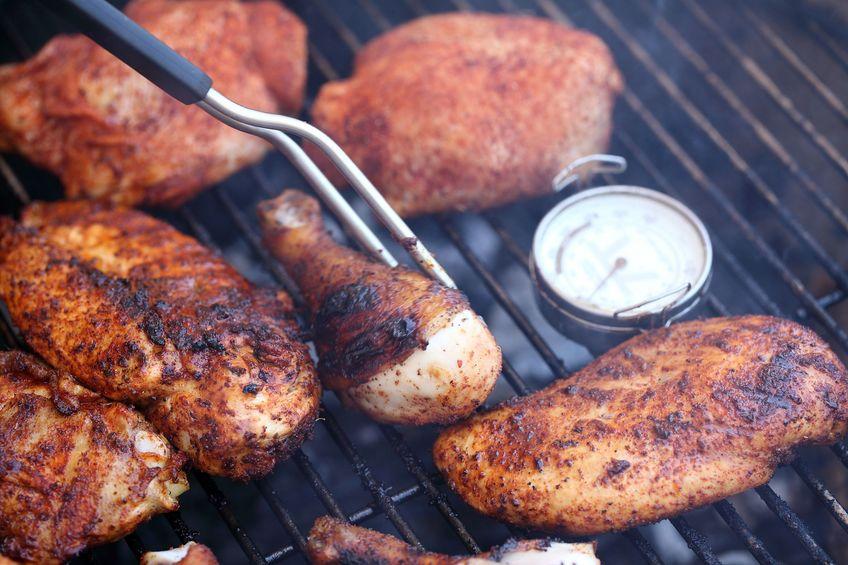
Understanding the right tools and techniques is essential for achieving medium heat on a grill.
Using proper equipment can enhance cooking precision and improve grilling outcomes.
Measuring Heat with Thermometers
Grillers benefit significantly from using various types of thermometers.
A meat thermometer is crucial for checking the internal temperature of the meat accurately.
This type helps ensure that cooked meat reaches safe temperatures without overcooking.
A food thermometer can also be useful for grilling vegetables and other items.
Grill thermometers provide readings of the actual cooking surface’s temperature, allowing for more accurate control of heat levels.
It is important to check temperatures frequently during cooking to maintain the desired medium heat.
Grilling Accessories for Best Results
Several accessories can enhance the grilling experience.
A grill basket is ideal for cooking smaller items like vegetables, preventing them from falling through the grates.
Using grill mats can also help with sticking and make cleanup easier.
A set of long-handled tongs is essential for flipping and handling food safely.
Heat-resistant gloves allow for easy maneuvering of hot items without risk of burns.
Lastly, a basting brush can be handy for applying marinades or sauces at the right moment, elevating flavor in grilled dishes.
Innovative Grilling Techniques
Employing innovative techniques can enhance flavor and improve cooking efficiency.
The two-zone cooking method involves creating areas of direct and indirect heat, allowing for better temperature control.
Items can be seared over high heat and then moved to the cooler side to finish cooking, which is especially beneficial for thicker cuts of meat.
Using marinades can enhance flavor and tenderness.
It is advisable to marinate meats for several hours prior to grilling.
Additionally, techniques like planking infuse dishes with unique flavors while also helping to maintain moisture during cooking.
Trying various grilling techniques can lead to discovering new favorite recipes and flavors.
Grilling Additional Foods
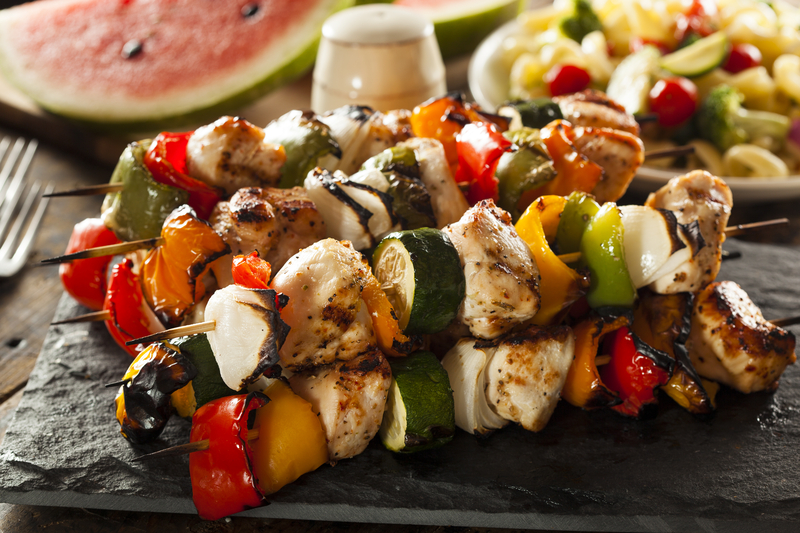
Grilling is not limited to just meat; various other foods can be enhanced with its unique flavors.
From vegetables to smoking meats, exploring these options can elevate the grilling experience.
Vegetables and Other Delicacies on the Grill
Grilling vegetables adds depth and a smoky flavor that enhances their natural sweetness.
Options such as bell peppers, zucchini, and asparagus are excellent choices.
To grill vegetables effectively, it’s advisable to cut them into similarly sized pieces for even cooking.
A mix of olive oil, salt, and pepper can create a simple and delicious marinade.
Grilled vegetables can be served as sides or incorporated into dishes like salads or wraps.
Additionally, fruits like pineapples or peaches can be grilled for a sweet treat.
Exploring Smoking and Slow Cooking
Smoking meats introduces an intense flavor that can transform simple cuts into culinary delights.
For those new to smoking, understanding wood types is essential, as each type imparts a different taste.
Popular options include hickory for brisket and applewood for pork.
The low-and-slow technique, typically around 225°F to 250°F, is suitable for larger cuts like brisket and turkey.
Using a smoker box or wood chips on a gas grill can facilitate the smoking process.
Slow cooking also provides a way to tenderize tougher meats, resulting in juicy dishes.
Grilling Masterclass
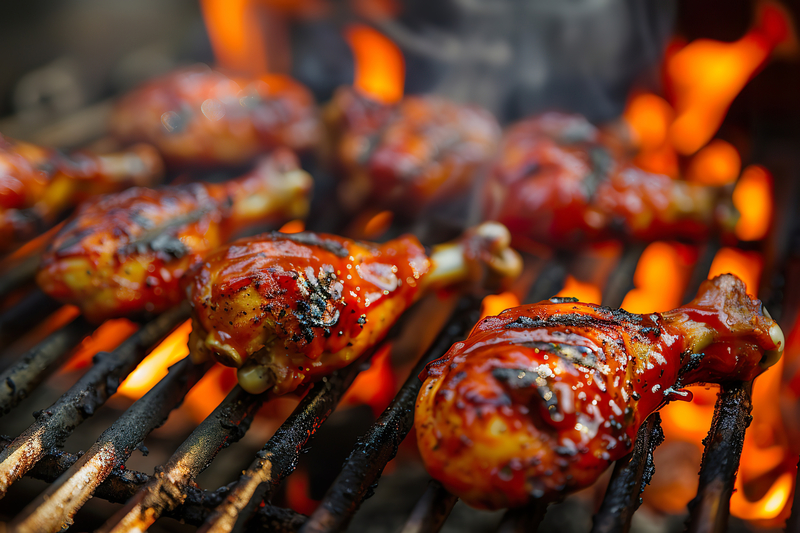
A solid foundation in grilling techniques enhances any outdoor cooking experience.
Key aspects include knowing the right temperatures and having a handy cheat sheet for various meats.
Compiling a Grilling Cheat Sheet
Creating a grilling cheat sheet can streamline cooking sessions and improve accuracy.
It should include essential grilling temperatures for various meats, ensuring optimal results.
For reference, here are some temperatures to include:
- Chicken: 165°F
- Beef Burgers: 160°F
- Steaks: 145°F (medium rare)
- Pork Chops: 145°F
This cheat sheet allows for quick adjustments based on preferences, preventing undercooking or overcooking.
Keeping it handy during grilling sessions helps manage heat and timing effectively.
Temperature Guidelines for Different Meats
Understanding specific temperature guidelines for different meats is crucial.
Each type requires unique temperatures for ideal cooking.
- Poultry: Always cook to at least 165°F for safety.
- Ground meats: Aim for a minimum of 160°F to ensure pathogens are eliminated.
- Steaks and Roasts: Use a medium temperature of 145°F for medium doneness.
- Pork: Should reach at least 145°F for safety and flavor.
Referencing a grilling temperature chart can assist in determining when meats are adequately cooked.
This knowledge supports successful outdoor cooking and enhances meal quality.
Achieving the Medium Heat Setting
Medium heat is essential for a variety of grilling tasks. It typically ranges from 300°F to 350°F.
This temperature allows for even cooking without burning the exterior.
To achieve this setting, one can adjust the grill’s burners or maintain the charcoal at the right distance.
For hamburgers, medium heat cooks them perfectly, helping to reach the recommended 160°F without charring.
Monitoring the grill temperature with a thermometer ensures precision.
By mastering medium heat, a chef can create perfectly cooked dishes that impress diners every time.
